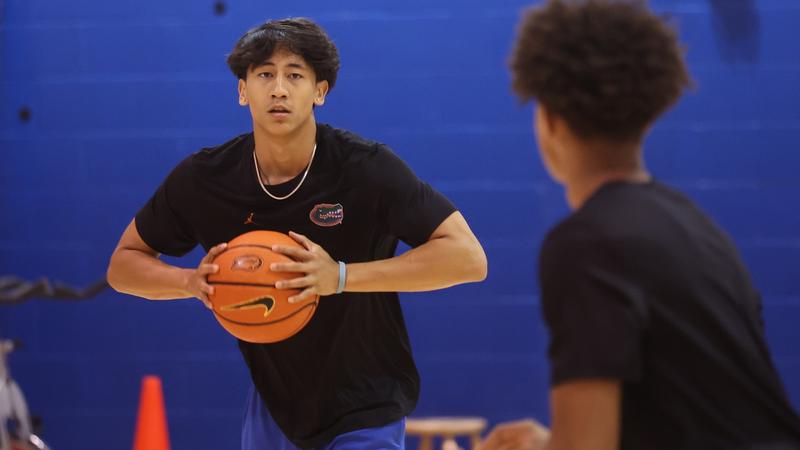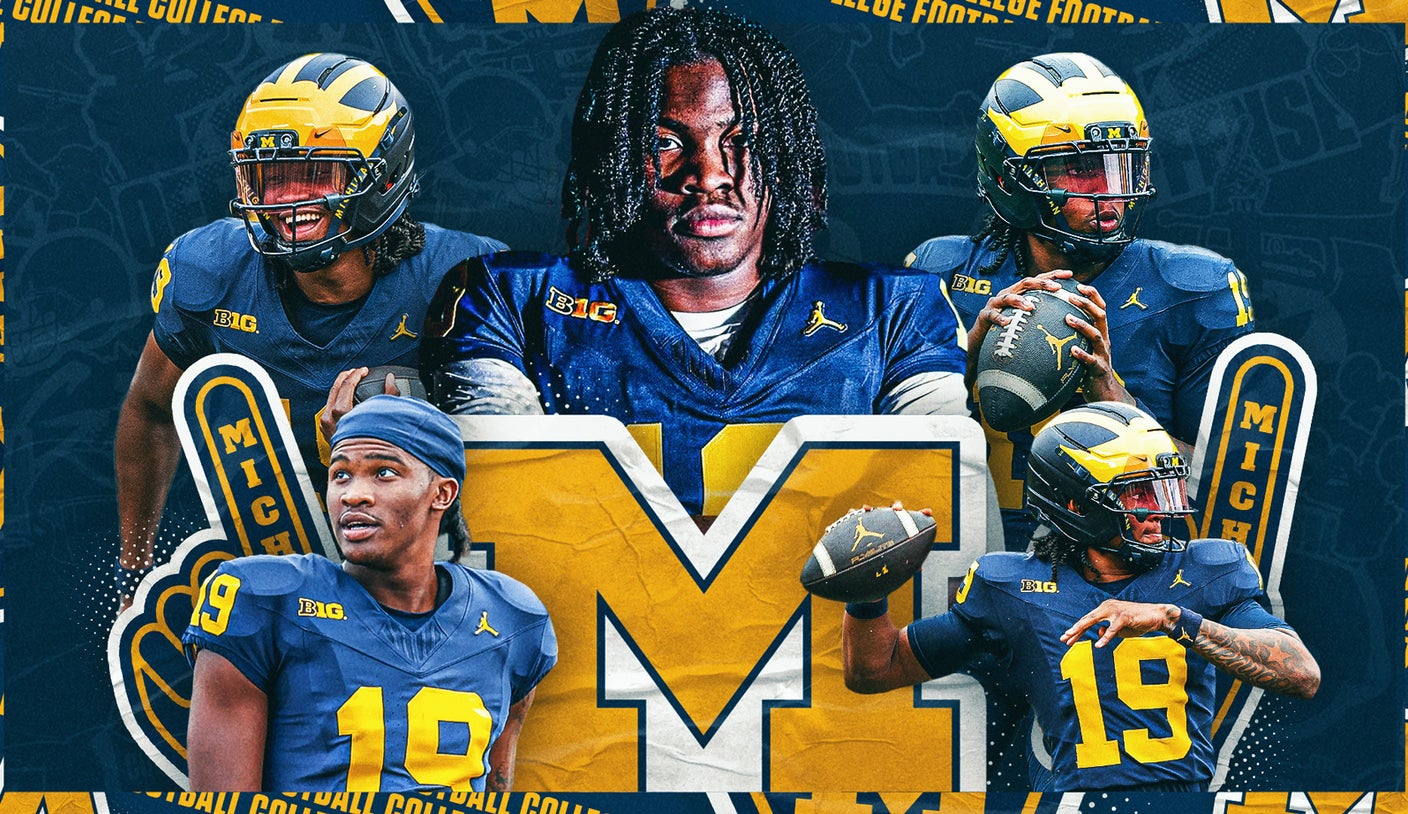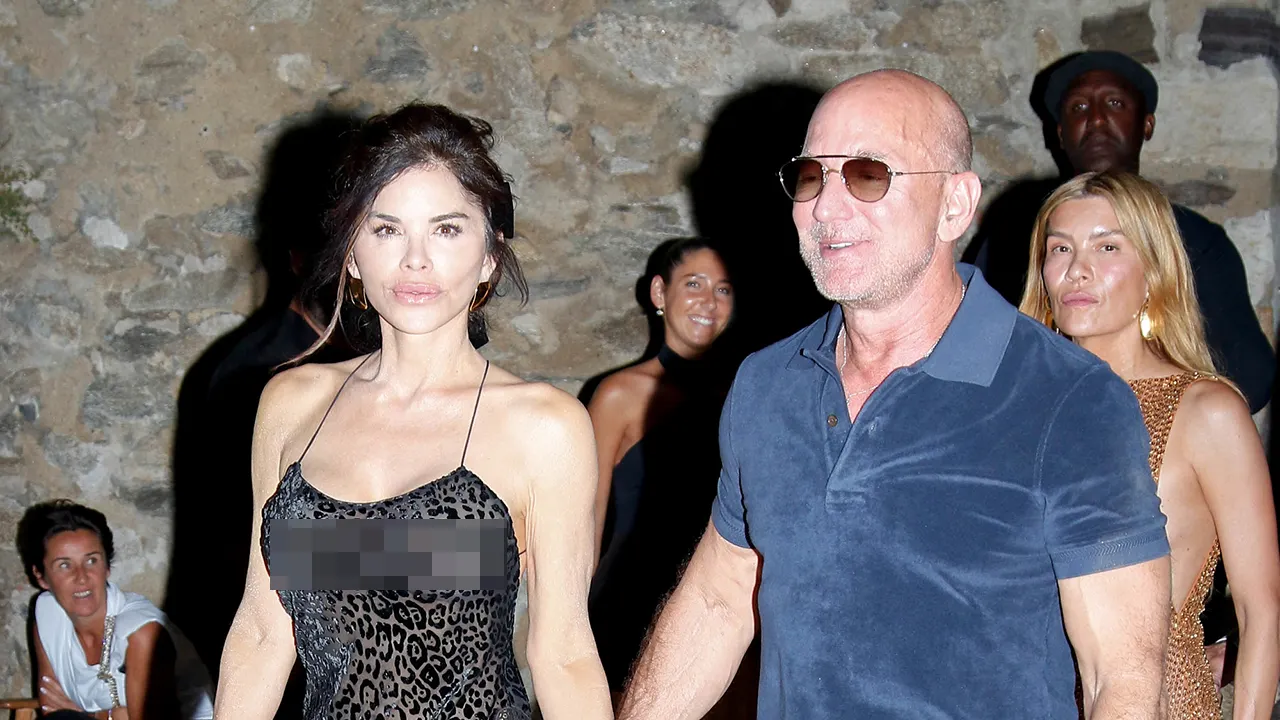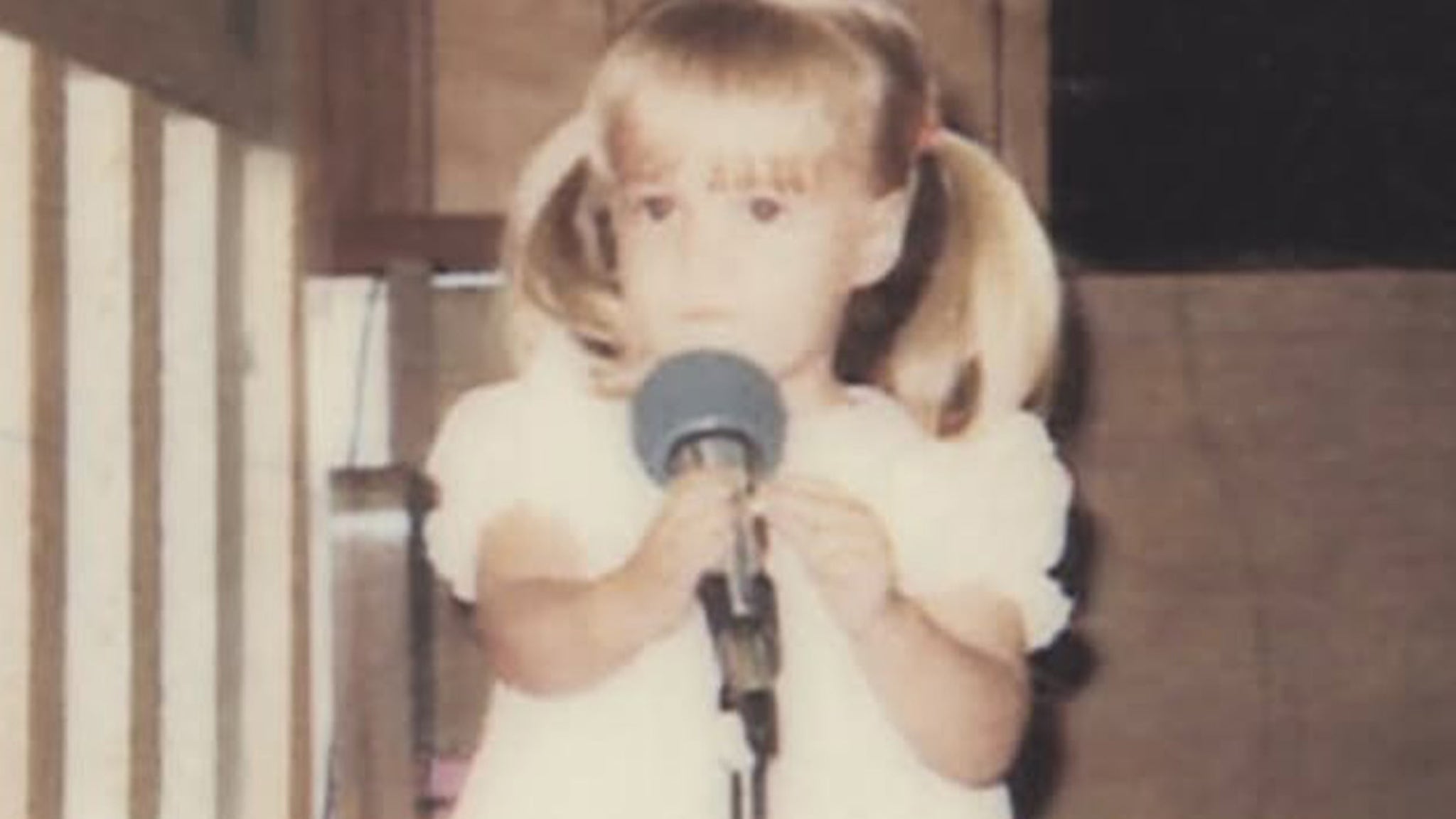The Anatomy (and Numbers) of a Portal Pitch
The Florida coaching staff, clearly, knew the audience.
“I’m a big numbers guy myself,” said Xaivian Lee, the 6-foot-3 guard who in March entered the transport portal after a sensational 2024-25 season at Princeton. “I love advanced stats.”
Todd Golden and his assistants knew as much when Lee came on his official visit in April. They came with receipts.
After a brief introduction, a slide flashed on the screen showing Zyon Pullin and Walter Clayton Jr., standout guards who transferred to UF from mid-major programs and faced competition commensurate, per the metrics, to teams Lee played against at Princeton.

The first image was Pullin, by way of California-Riverside, where over his career, the slide showed, he averaged 12.0 points, 4.1 rebounds, 3.6 assists, shot 35.2% from the 3-point line and was named second-team All-Big West Conference his final year. Pullin’s lone year at UF he averaged 15.5 points, 3.9 rebounds, 4.9 assists, shot 44.9% from deep and was voted first-team All-Southeastern Conference.
Then came Clayton. In two years at Iona, he was 12.0 points, 3.2 rebounds and 2.4 assists on the way to being named Metro Atlantic Athletic Conference Player of the Year as a sophomore. Lee, like any college basketball fan in the country, had a good idea where the next slide was going. In Clayton’s two years with the Gators, he averaged 17.9 points, 3.6 rebounds, 3.4 assists and in 2025 was named (in chronological order) a finalist for the Bob Cousy Award as the nation’s top point guard, first-team All-SEC, SEC Tournament Most Outstanding Player, first-team All-America, NCAA West Region MOP and 2025 Final Four MOP after leading the Gators to the national championship.
Then popped an image of Lee, photo-shopped into a No. 1 Florida uniform, and three teased bullet-point items – “Data Driven Improvement,” “Commitment to the Work” and “Style of Play” – the Gators were about to flush out specifically on his behalf.
How we play, how you fit gives you a chance to be the next great Florida guard.
“How does it all work? How does it all come together,” Golden explained. “These are the three ways we feel like can break down how he’s going to fit. We talk about how we’re going to improve through our data-driven approach, through great coaching and management and – very important – how we play.”
By the end of the presentation (and certainly by the end of his visit), Lee was sold. He signed with the Gators the following week and instantly filled a giant back court hole in a program still very much on a high from its stirring title-winning run, but also looking to replace 1,790 points – or 53% of the team’s scoring – after the exits of the splendid senior guard trio of Clayton, Alijah Martin and Will Richard.
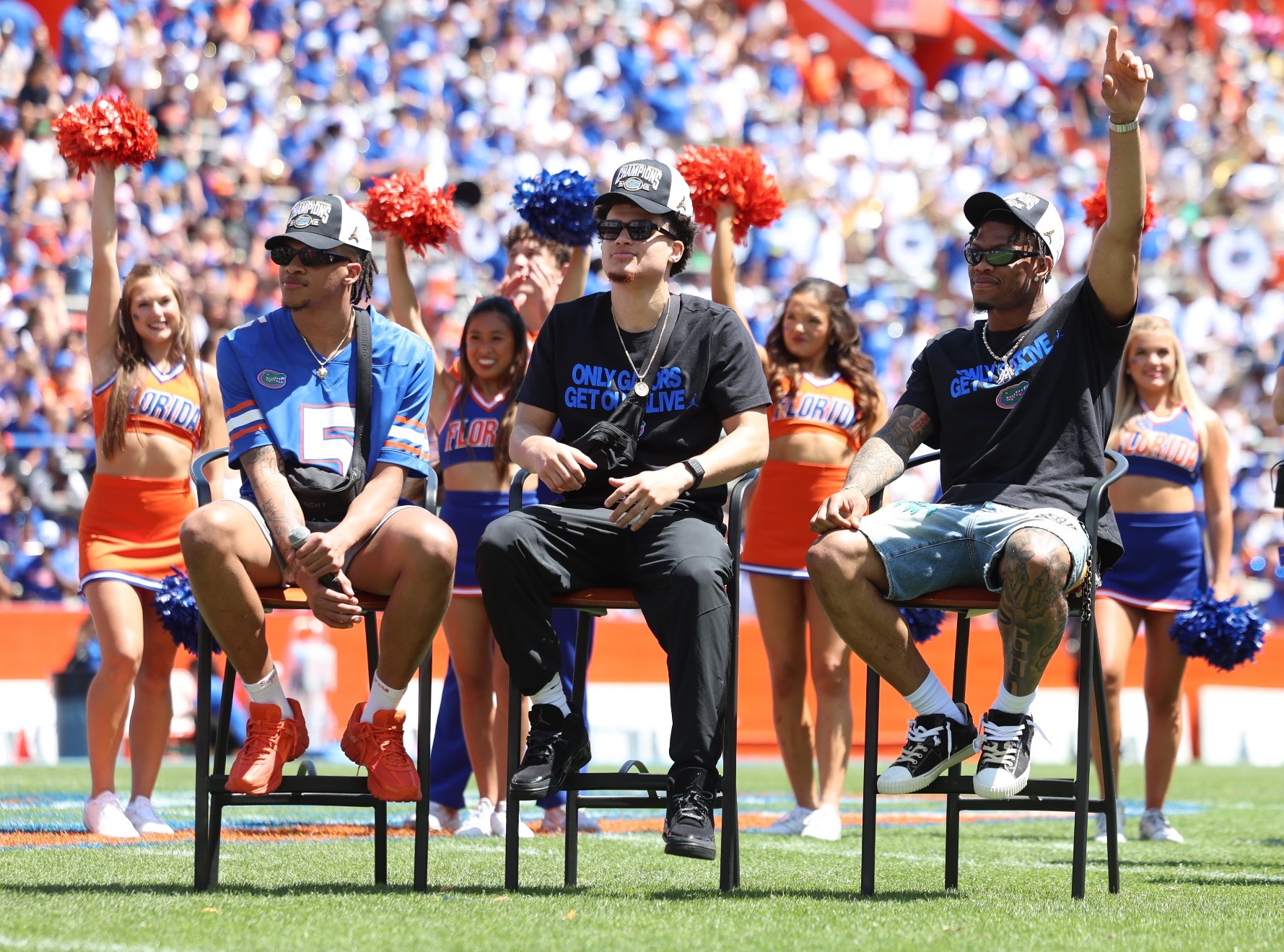
The luring of Lee, who averaged 16.9 points, 6.1 rebounds and 5.5 assists in his first-team All-Ivy League junior season, was not unlike how the Gators coaxed Clayton and Pullin, or Martin or Richard, or forwards Rueben Chinyelu and Micah Handlogten, or any of the transfers folded into the program during Golden’s first three seasons. The UF way of recruiting leans heavily into analytics – numbers already produced and numbers projected – and the on-floor results have been astonishing.
Nearly every opposing coach (media talking heads, also) during Florida’s 36-win ’24-25 season had high praise for the team’s roster construction, as well as the cohesion with which the Gators played. After saying goodbye to the best guard trio in the country (all three players were selected in the NBA Draft last month), the offseason’s roster rebuild was concentrated completely on the perimeter, what with Florida returning what could be the top front line in the country in 2025-26.
Last week, Golden and members of his staff were gracious enough to do a walk-through mock presentation of their power point recruiting pitch to Lee – similar to the one they used to lure Boogie Fland from Arkansas and AJ Brown from Ohio U this offseason – and thus provide an illuminating look into just how detailed and deeply the numbers are crunched.
“It gave me the impression that they really, really knew my game and not so much were going by the eye test, which I think a lot of coaches do,” said Lee, an 1,100-point scorer for his college career, but one of the best passers to come into the program in recent years. “I mean, other coaches aren’t usually talking about assist rate. They’re talking about how much freedom you’re going to get. That’s fine, but these [Florida] guys were more about why they liked me – with data – and why they wanted me to be a part of their program and why I fit in so well.”
Golden expanded on that.
“A big part of our recruiting process is trying to sell a vision of how these student-athletes will fit into our program, how they’ll be successful both individually and in the team concept,” Golden said. “So, we create these presentations and walk them through it, usually with a family member. The first part is more about Florida and the program. The back half is very analytically based, specific to them.”
Lee became the latest in a growing line of Florida players no recruiting services ranked in their top 100 national prospects coming out of high school. UF had 13 such scholarship players (out of 13) on its roster last season and it worked out pretty well. The Gators became the first team since the NCAA Tournament expanded to 64 teams in 1985 to win the title without a top-100 prospect.
No one, however, would say UF didn’t have great players. The Florida coaches, their system and overall plan made them great.
Lee was told how and why.
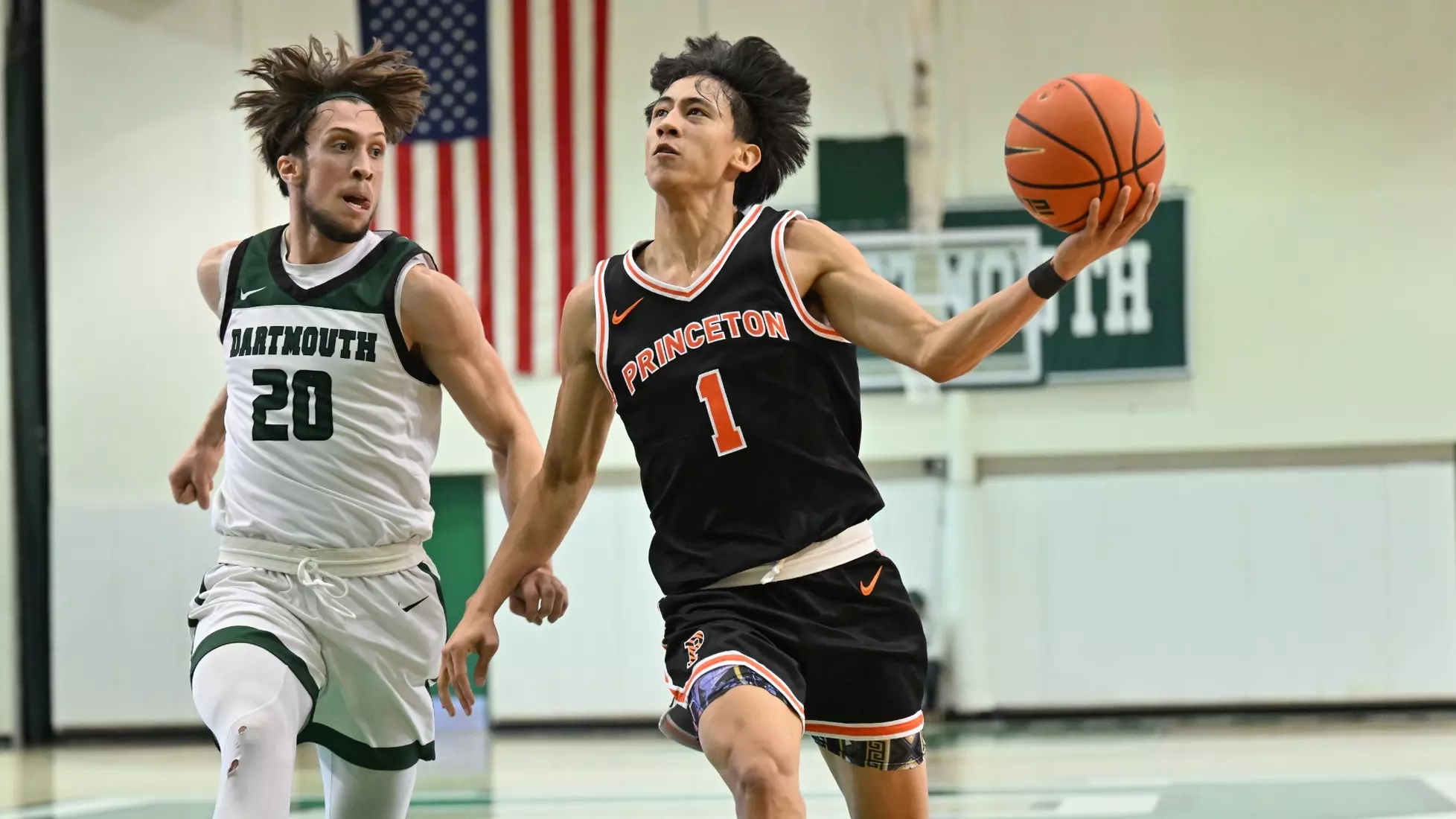
The first few slides touted the Florida’s bona fides on and off the floor, listing its championship pedigree, as well as the university’s academic standing as one of the top public schools in the nation, per Forbes. That was important to Lee’s parents, who were concerned about him leaving Princeton one year shy of an Ivy League degree. The team’s family culture was emphasized, along with the program’s philosophy of finding players with great attitude, great work ethic and want to be Gators.
The underdog mentality, accentuated through the postseason by Martin’s “Remember where you came from” mantra, was highlighted, with an accompanying video, followed by a rousing two-minute montage of high end moments from the championship season.
“They should all want to commit after that,” Golden said with a smile.
Then came the focus on development, first using Pullin and Clayton as examples, followed by a detailed explanation of the program’s “Hustle Stats” grading system. The staff logs every 5-on-5 practice possession using 40 statistical categories that have the greatest impact on winning and losing. It’s UF’s version of “Moneyball” and it’s broken down so each player gets a “HSE” (Hustle Stat Efficiency”) number for the day.
“The over-arching theme and top-down view of hustle stats is that it is process over results. An area in which that is exemplified is in ball-handling stats. When you look at a box score, there are only two ball-handling stats: assists and turnovers,” explained assistant coach Jonathan Safir, who the previous three seasons held the post as director of basketball strategy and analytics, while playing a crucial role in the roster building of last year’s historic campaign. “We take assists and break them down further; assists, assist to foul, virtual assists, and hockey assists. If you pass to a guy who misses a wide-open 3, the box score does not give you credit for that. But you made the right basketball play – process over result – and in our system, we want to reward that. Over time, if you make the right play more often than not, irrespective of outcome, your team will be better off. So that would be a virtual assist, and a high-achiever and growth mindset individual like Xaivian understands and appreciates that.”
The system separates categories into shooting, ball-handling, defense and rebounding, with each having anywhere from nine to 18 sub-categories that are assigned value for a particular play. The value is adjusted season to season by the staff due to personnel and other factors, but a made shot, for example, adds points to a player’s HSE, while a missed shot subtracts points. An assist may be worth three points, but a live-ball turnover is a whopping minus-5. A box-out, charge taken or steal is a positive number, but a blow-by, weak close-out or gamble on defense is a negative. Etc.
Each player is graded after each practice, and the numbers are aggregated over the course of the season and reviewed constantly.
Next came the HD Intelligence scout of Lee. HDI is a analytics service the team uses to evaluate players. Lee’s HDI page described him as a player of elite efficiency and high-usage shot creator who graded high in the open floor. He got excellent marks as a defensive rebounder and solid ones as a steal threat and shot-blocker. Lee was dinged as a subpar finisher at the rim, thus an area the UF coaches would concentrate on.
Then it was on to Lee’s KenPom.com page for the last two seasons at Princeton. The coaches made particular mention of his offensive possession (or usage) percentage of 29.2 (75th nationally) and assist rate of 36.8% (19th). The former held steady in his few games against Tier A&B competition (Top 100 teams), while the later actually increased to a killer 44.6.
“The numbers are the first bullet point we look it, specifically with regards to tier A and B competition,” Safir said. “Transitioning from the Ivy League to the SEC, almost all of Xaivian’s games will be against tier A and B competition. His numbers in those games stood out [because] he did not suffer a drop-off statistically as the competition rose. From there, in addition to obviously doing a thorough breakdown of the film, it’s on us to look at other stats — off the dribble shooting, as one of the myriad of examples — to see how we expect him to contribute and perform with 30-plus tier A and B games, as opposed to just six.”
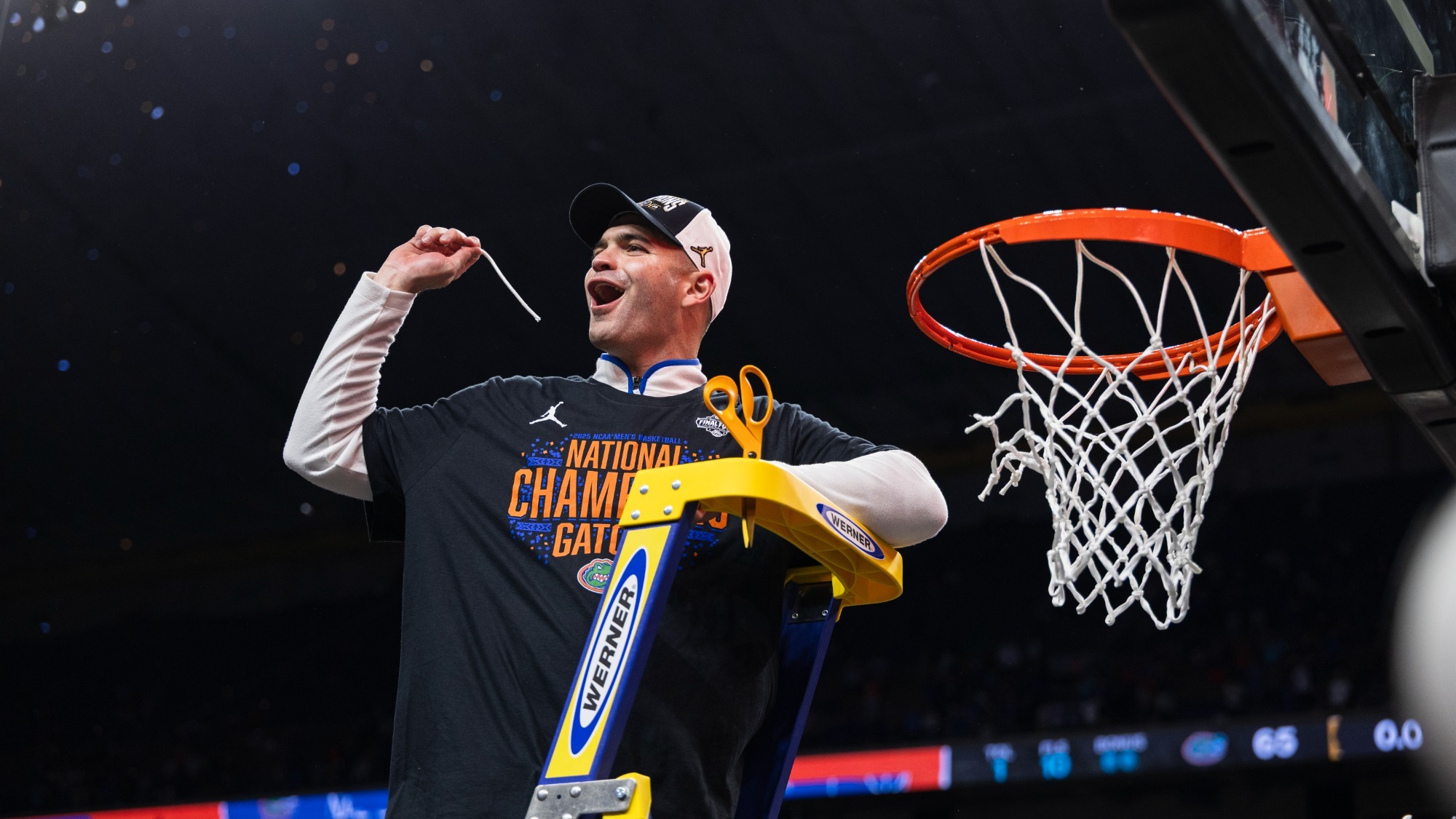
Safir continued, noting one of Lee’s listed numerical comparison players was future NBA star Damian Lillard in 2010 at Weber State. Yeah, that’s good.
“These numbers are encouraging,” he said. “Had he not performed well in those tier A and B games, it would have been a major red flag for us. But every metric we studied, in addition to the eye test, led us to believe that Xaivian has as good of a chance as any to succeed transferring up multiple levels; from the Ivy League to the best conference in college basketball. Obviously, that does not guarantee success or a 100% certainty. He has come here, put in the work and go and do it. But we loved all of our background research on who Xaivian is as a person and how he would fit into our culture that we have cultivated here over the last three years.”
There was also conversation about increasing Lee’s catch-and-shoot numbers, which were low at Princeton because he had to create so much offense for himself. Note: Lee’s ability to freeze defenders and create space with his change of pace makes him a huge late-clock threat with the ball.
“His off-the-dribble numbers being so elite were encouraging in his skill being able to translate, but we were optimistic that the quality of his catch-and-shoot opportunities will be better here because he will be surrounded by other players with an ability to create,” UF director of basketball operations Jordan Jacobson said. “He was the engine behind such a high proportion of the offense at Princeton – for himself and creating looks for others – that there weren’t many high quality catch-and-shoot opportunities generated for him. That’s a way he presumably will benefit playing in our program.”
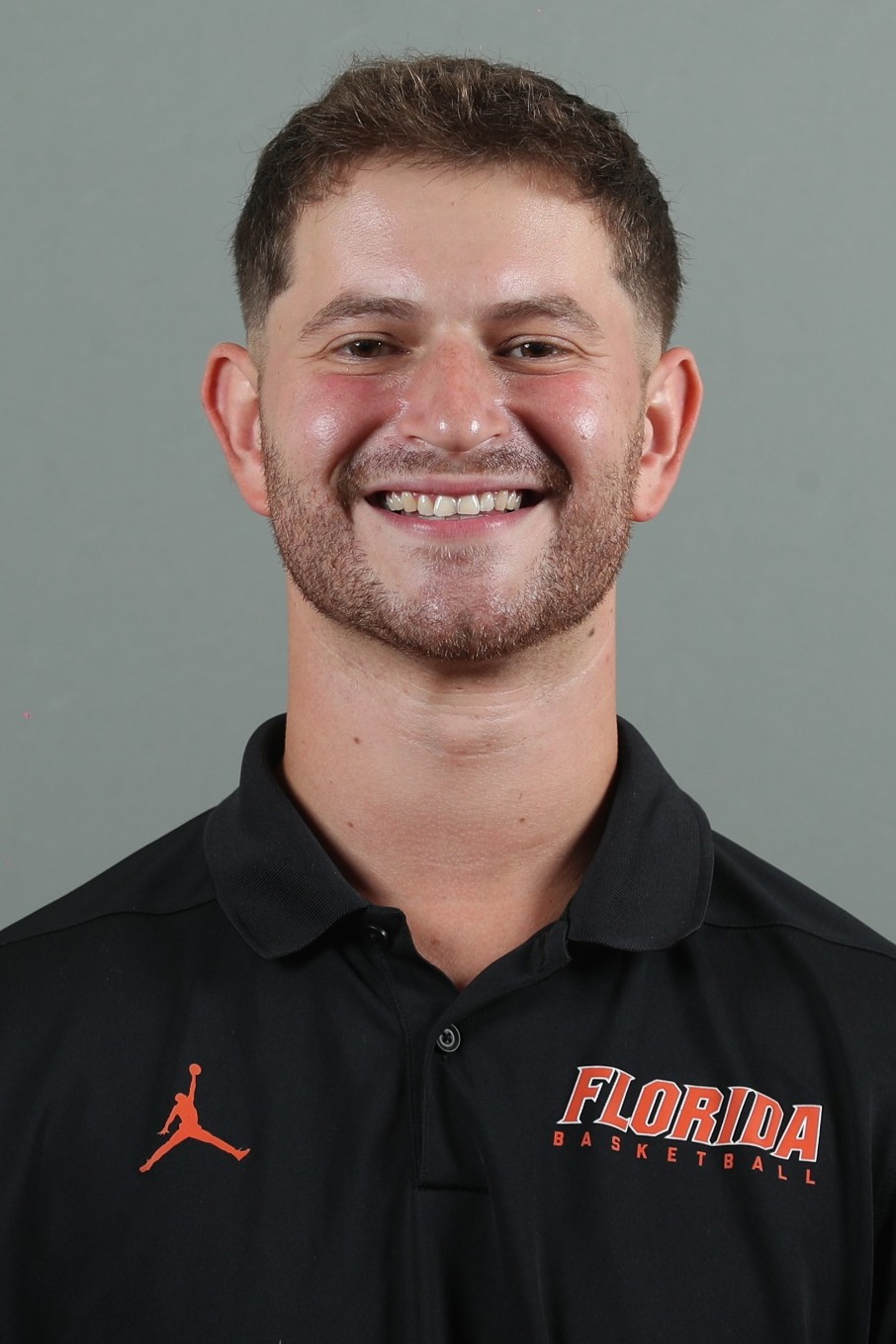
Then came Clayton’s KenPom page his final season at Iona lined up alongside Lee’s last season at Princeton. There were some similarities. Then came a few words about assistant coach and director of player development Taurean Green, the two-time national champion point guard with NBA development background, who spends hours of extra time with guards on the floor in individual instruction sessions.
That conversation gave way to a comparison of the production of both Pullin and Clayton in their previous stops relative to pace of play and how they doubled their transition assist numbers playing in UF’s higher tempo.
And, again, with better players.
Then came video examples highlighting either Clayton and/or Martin in specific transition situations (attacking the basket, throwing ahead, cross-court passing), ball-screen offense (attacking the rim, mid-range shots, 3-point shooting, facilitating), attacking closeouts and drawing fouls. In each instance, the clips of the Gator executing the play were followed by multiple clips of Lee making very similar plays.
Sort of like the below clips, courtesy of his YouTube highlights video:
“Picking these clips, specifically, is to make him feel comfortable that he’s going to fit into the system,” Jacobson said of Lee, who is equally proficient at snapping passes with his left hand or right hand. “This wasn’t the film we watched to sell ourselves on him.”
No, that step in the process had been done long before. So, too, had a conversation with forward Thomas Haugh, who played alongside Lee for one season during their Pennsylvania prep school days. Haugh told his coaches that Lee was a big fan of former Gator Tre Mann.
“We pulled four or five Tre Mann clips that looked similar to Xaivian,” Jacobson said.
They worked. Lee’s individual game favors element’s of Mann’s, especially his ability to create space off the dribble.
The final series of clips interspersed Lee with both Clayton and Mann in late-clock, late-game situations. And scoring.
The final slide was a re-purposing of the first one; of Lee in a UF uniform, wearing No. 1, his arms raised to a signoff line of text. This one had an added message.
NEXT 1 UP
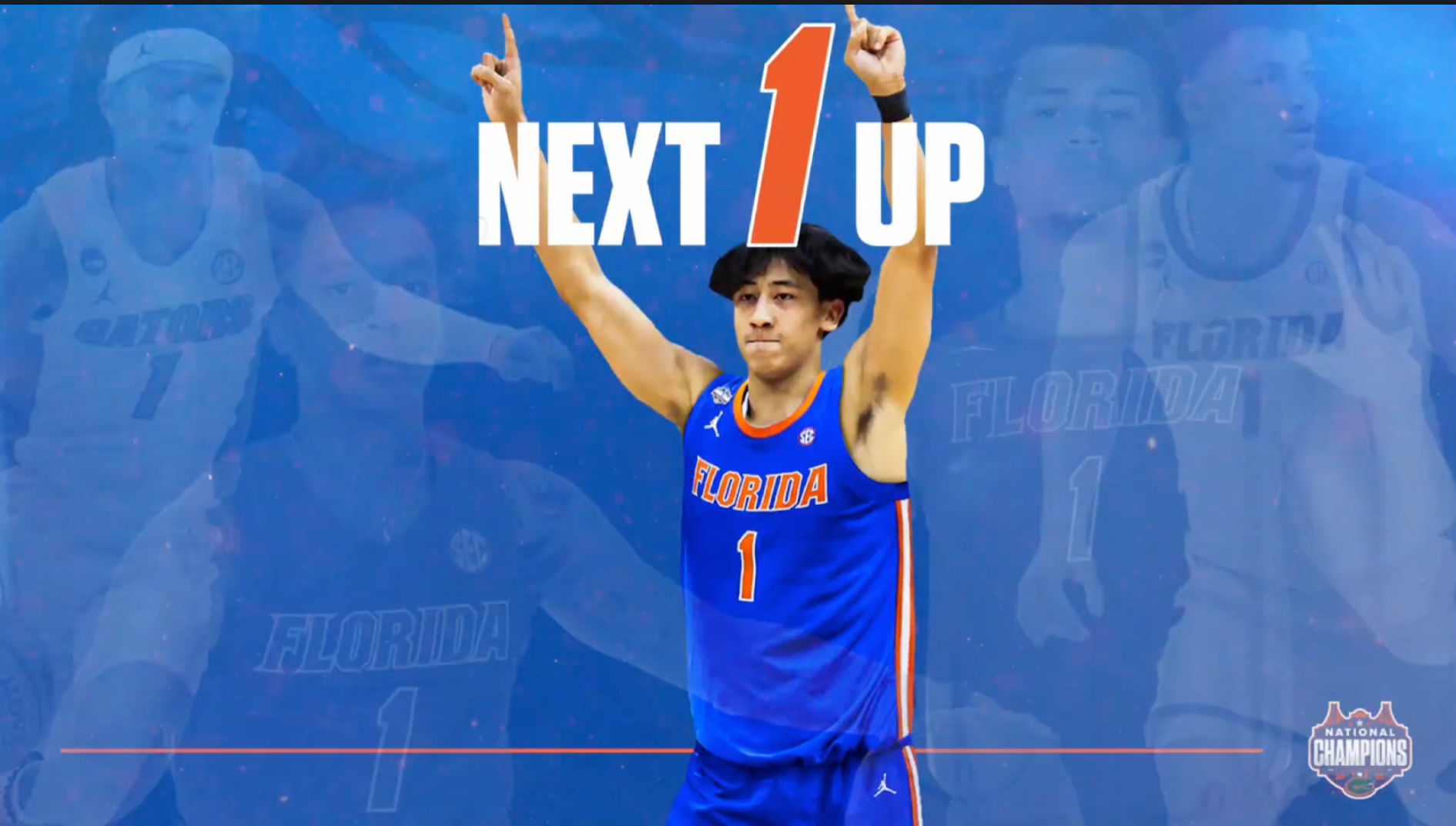
Now the Gators, collectively, have to find a way to make their back court makeover work. It’ll be a significant transition, but that’s what the next few months will be about in the gym. What the coaches did in their office presentation for Lee (as well as a few weeks later for Fland, another supremely gifted combo guard) laid the groundwork for it all.
“I think I have a pretty good idea about my game, but the way they broke it down took it to another level,” Lee said. “It all made sense.”
For everybody.
Email senior writer Chris Harry at chrish@gators.ufl.edu
Source link
editor's pick
latest video
Sports News To You
Subscribe to receive daily sports scores, hot takes, and breaking news!

